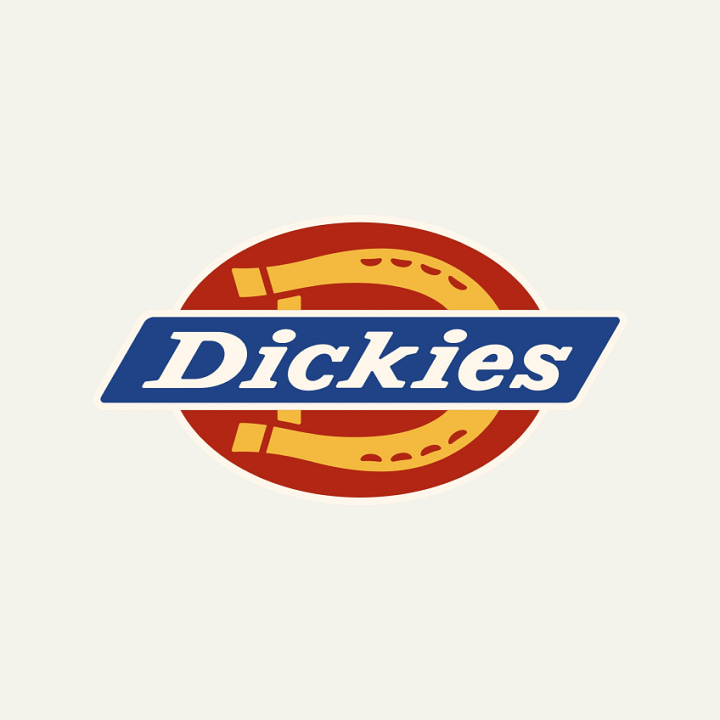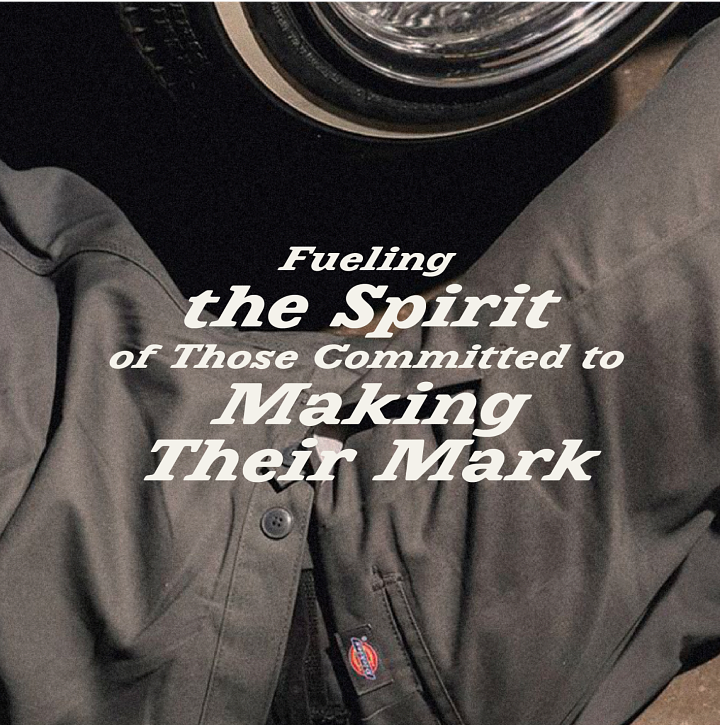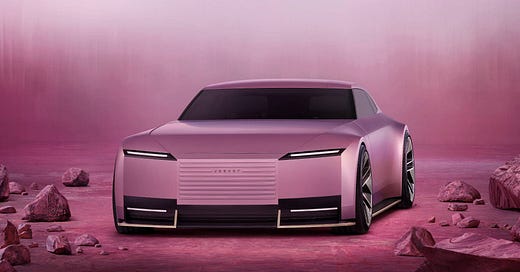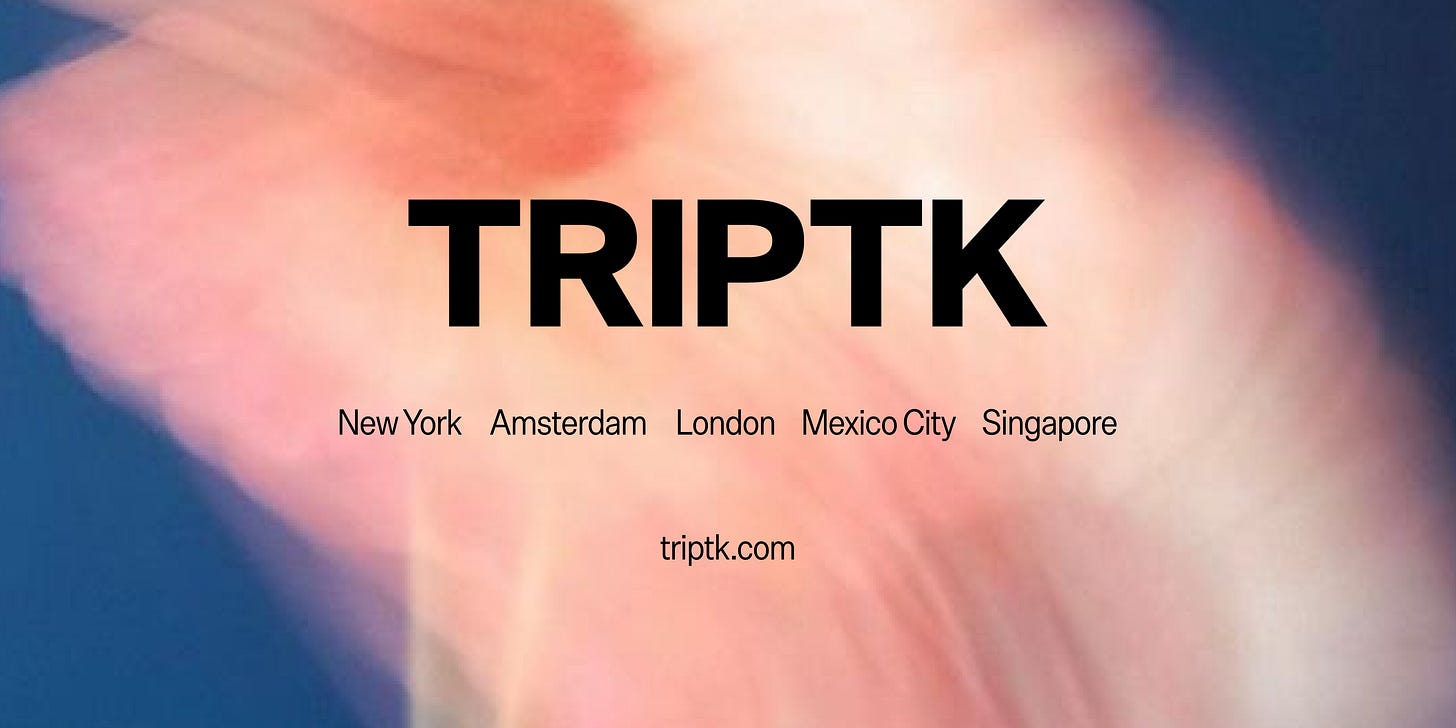Decoding Change: How to Reinvigorate Your Brand for 2025 & Beyond
So many options: Rebrand? Refresh? Replenish? Recycle? Rebirth?
Each issue of Codex, written by a different member of the TRIPTK team, digs into the ephemera, artifacts, case studies, and conversations most interesting to them at the moment.
It’s for readers who want to give more to culture: to contribute vs. appropriate, embed vs. watch from afar, lead vs. follow. Join us for the ride.


Decoding the complexities of the branding process
Welcome to February. We’ve kickstarted a new year, there’s optimism in the air. Mariah Carey has deposited that holiday royalty check. We’re planning out Spring Break & trying to recover from Kendrick at the Super Bowl.
In this Western world of ours, the start of a new year is usually a moment to start over, and set resolutions to better ourselves and pursue new (and old) goals. Every year, I promise myself that I’ll keep the coffee consumption to the minimum. (And every year, I break my resolution by the second week.)
Humans have a unique habit of writing down desires and aspirations, signaling our deep and primal desire for renewal and novelty. This has been with us for over 4,000 years, from ancient Babylonian papyrus to iPhone Notes apps.
Our nature—craving both change and consistency—makes us dance back and forth between these poles. Some years, we need structure. Others, we crave a reset.
Brands, much like humans, also experience moments of desire, aspiration, and renewal. They need both a structured point of view and the ability to adapt to cultural shifts. However, jumping too easily into trends risks looking dated when those trends fade. Finding the balance between maintaining a brand’s core identity and embracing evolution is essential. And often tricky.
When a brand suddenly changes—no matter the reason—we either solidify our existing associations or reframe the way we perceive that brand and its products. It can be perceived as wrong, irrelevant or out of place (as in response we saw to Jaguar’s rebrand in 2024). Change is a fragile thing.
Was the Jaguar brand shift right or wrong? Only the consistency and distinction of their branding efforts, and their sales performance, will give us the answer.
Recoding brands with cultural relevance
In 2024, we saw an influx of brands stepping into the craze of evolution—new trends, new markets, new identities. With so much happening simultaneously, and the cultural and political environment of early 2025 adding further challenges, pinpointing the right moment for change can feel daunting.
In these times, recognizing the signals of a brand’s readiness for a change becomes vital. But how do we assess whether a brand is ready for a significant shift, and if so, how much change is needed?
Brands often evolve in response to major business and cultural moments. At TRIPTK, we typically refer to these as Critical Inflection Points, which may include:
Mergers and acquisitions
Leadership changes
Operational model shifts
Market dynamics shifting
Performance challenges
Scaling pains
Each of these triggers may demand a different degree of effort and investment in brand evolution, and recognizing these moments early and responding with precision can make the difference between a successful brand transformation and a missed opportunity.
Sometimes a brand launches as one thing and then realizes that they’re set up for success as something else entirely. Other times a hero product leads the way, and as the company matures and other products are added they realize their design system isn’t sufficient enough to manage the additions. Or other times, there’s a merger or acquisition with competing systems. Or culture changes rapidly—so rapidly that new entrants start to encroach on your space.
While these moments are clear indicators of a need for a brand change, the extent of that change can vary. These inflection points can be addressed through subtle refinements or extensive overhauls.
This is where a spectrum of effort comes into play—from refresh to rebrand, a binary that’s not always helpful. That said, most branding work will likely fit into the “refresh” side of things, where teams like TRIPTK are partnering with brands to evolve them for the future rather than something more dramatic.
On this spectrum, we assess the scope of change and efforts needed, which can range from small, incremental adjustments to foundational transformations. Each point on the spectrum demands different levels of investment and strategic alignment.
A brand refresh typically involves lower effort, costs, minimal risks and a higher reliance on creative capacity. This approach is ideal for situations where refreshing a few brand or product elements can make a significant impact without altering the core identity of your company. Subtle, yet effective changes can modernize your brand or product while maintaining its essence. For example:
Aiming for minimal product changes that focus on ensuring existing brand elements remain aligned with your vision and market goals
Developing a clearer or refreshed understanding of a core audience
Targeting specific and cost-effective areas that optimize brand or product experiences
Exploring minor visual updates that pose no disruption to brand perception, leveraging creativity to refine your vision
For instance, our work with Dickies in 2024 exemplifies a refresh: subtle yet effective changes to its tone of voice, logomark, typography, art direction, and design system that modernized the brand while maintaining its core essence.


On the other hand, a comprehensive rebrand requires a complete overhaul, often driven by the need for a significant commercial impact and a full organizational alignment.
This path is inherently more demanding, riskier, and demands greater creative and financial resources. This could include a new name, new positioning or audience articulation, new visual identity system, or a new organizational structure—all representing a transformational shift for the business. For example:
Redefining the core value proposition of your organization, transforming your brand foundations from the ground up
Constructing a full organizational buy-in around a new North Star by restructuring your internal goals
Building a new product roadmap that’s rooted in a newly articulated design target’s needs
Investing in larger creative shifts that reflect encompassing cultural shifts, such as a complete identity overhaul
From incremental tweaks to foundational transformations, the level of effort required to evolve a brand depends on these dimensions. It’s about finding the right balance that aligns with the organization’s needs, resources, and goals for the future.
This year, we had the privilege of partnering with the Consumer Technology Association, creators of CES, to unveil a comprehensive brand refresh. The effort drew on the principles outlined above, balancing marketing innovation with proposition consistency, to redefine the brand for its next 100 years.
By carefully analyzing market trends, consumer expectations, and the brand’s historical strengths, we crafted a visual and strategic identity that positions CTA as a forward-thinking leader in tech. We had the opportunity to speak more about the work at #CES2025 this past January.
Worthy recommendations from Ale
Each issue, we share a series of recommendations from our team—both cultural artifacts (podcasts, books, essays, movies, playlists) and more philosophical pursuits (questions, processes, advice).
Design Book? The Politics of Design, Ruben Pater
Take a look at The Politics of Design: A (Not So) Global Design Manual for Visual Communication by Ruben Pater. It’s an essay on how the understanding of anthropology and sociology in various regions could help us design better products while moving away from the centralized Western view of design.
Design Podcast? Untalented, by UNKNOWN
Have you ever wondered what your creative and strategy teams really think of your brief after you send the RFP? The Untalented Podcast by Unknown offers an insightful backstage view of the creative process.
Design Community? Brand New, by Under Consideration
A place where opinionated creatives gather to discuss the latest brand refreshes and rebrands. Discover opinions, memes, and insights into the latest trends.
Links shared this month in Slack / over text / in decks
Kendrick Lamar’s Bootcut Jeans Stole the Show (The Cut): “Do not fear the bootcut! You may not have a custom Martine Rose jacket to pair them with, but you’ll figure something out.”
The Mood of the American Consumer is Souring (WSJ): “Tariff threats, stock market swings and rapidly reversing executive orders are causing Americans to feel considerably more pessimistic about the economy.”
How Starbucks Plans to Return to its Coffeehouse Roots (The Case for Brand by
): “In August Brian Niccol was appointed Starbucks’ new ceo & chairman, bringing in turnaround experience from Taco Bell and Chipotle—and some seriously high pay expectations, already being awarded $96M in his first few months on the job.”Note on the Relationship Between Artificial Intelligence and Human Intelligence (The Vatican): “So much can be learned from an illness, an embrace of reconciliation, and even a simple sunset; indeed, many experiences we have as humans open new horizons and offer the possibility of attaining new wisdom.”
How Zyn Conquered the American Mouth (GQ): “The renormalization of nicotine might come from our collective wish to optimize our lives with an array of cute and clean-feeling substances (the THC gummy, the functional nonalcoholic cocktail) that feel not like a gross departure from our aesthetically curated days, but like an extension of them.”
What is Hims Actually Selling? (The Atlantic) “The job of marketing is to influence behavior, and sometimes that means identifying problems that you may not know that you have, or underlying insecurities that may prevent you from losing social currency down the road.”
About TRIPTK & Codex
TRIPTK is a brand & innovation consultancy. We partner with leaders to decode and recode critical cultural shifts, creating brand value for today and tomorrow.
Codex is a monthly newsletter sharing the TRIPTK perspective. It’s for readers who want to give more to culture: to contribute vs. appropriate, embed vs. watch from afar, lead vs. follow.
Any outsized opinions expressed here are solely the authors and do not represent the opinion of the company. If you like this newsletter, consider subscribing – or sharing with others who might enjoy it. Feel free to comment, email, say hey, and/or send us things to read.











